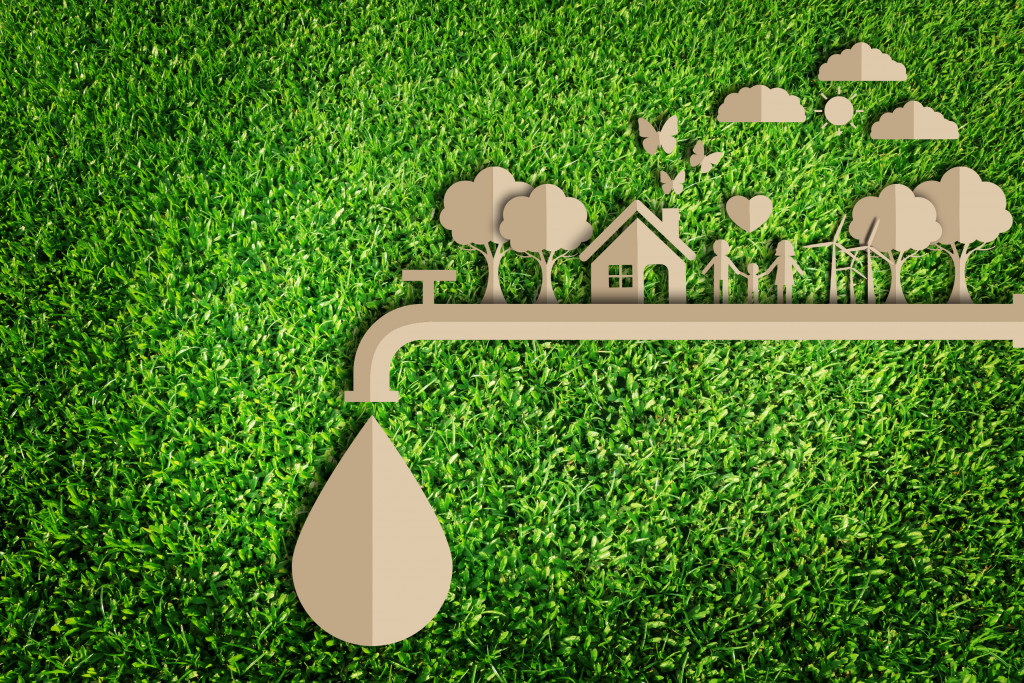In recent years, there has been a growing trend of people wanting to live more sustainably. One way to do this is by building an eco-friendly home. While this may seem daunting, it can be easier than you think. This blog post will give you six ultimate tips for building an eco-friendly home.
1. Use Sustainable Materials
Building an eco-friendly home starts with using sustainable materials. When selecting materials for your home, look for those certified by an environmental organization such as the Forest Stewardship Council or the LEED program. These materials have been sourced environmentally responsible and can help reduce your home’s carbon footprint.
Here are some sustainable materials to consider using:
- bamboo: a fast-growing grass that can be used for floors, walls, and furniture
- cork: often used as flooring, cork is durable and eco-friendly
- recycled glass: can be used for countertops and tiles
- wool insulation: made from sustainable sheep’s wool, this insulation is non-toxic and biodegradable
2. Use Energy-Efficient Appliances
The way your home is powered can also have an impact on the environment. Look for energy-efficient appliances when outfitting your home. These appliances use less power and water, which can help save you money on your utility bills while also being better for the planet.
If you’re not sure which appliances are most efficient, look for the ENERGY STAR label. The US Environmental Protection Agency gives this label to appliances that meet strict rules about how much energy they use. Also, be sure to properly maintain your appliances to keep them running efficiently. If an appliance is not running properly, it can use more energy and water, which wastes resources and increases your bills. So, be sure to clean your filters and follow the manufacturer’s recommended maintenance schedule.
3. Consider a Solar Energy System
One way to make your home more eco-friendly is to install a solar energy system. Solar energy systems use the sun’s rays to generate electricity, which can power your home. This renewable energy source doesn’t produce pollution or carbon emissions, making it a great choice for those looking to reduce their environmental impact.
If you live in an area with a lot of sun, solar panels can be a great way to get energy from the sun. Solar energy systems can be costly, but there are often incentives available to help offset the cost. Be sure to do your research to see if solar is right for you and your home.

4. Use Eco-friendly Furniture
Furnishing your home with eco-friendly furniture is another great way to make it more sustainable. Look for furniture made from sustainable materials such as bamboo, wool, or recycled plastic. These materials are durable and environmentally friendly. For example, go for a solid wood dining table instead of one made from particleboard, which is often made with Formaldehyde, a toxic chemical.
When shopping for furniture, look for labels that say “no VOCs” or “low-emitting.” These labels indicate that the furniture has little to no volatile organic compounds, which can be harmful to your health. Also, be sure to buy furniture from companies with sustainable practices.
5. Install Low-Flow Fixtures
While water is a renewable resource, it’s important to conserve it. You can do your part to save water by installing low-flow fixtures in your home. These fixtures use less water than standard fixtures, which can help reduce your water usage.
Low-flow showerheads are an excellent option for the bathroom. These showerheads often have a flow rate of 2 gallons per minute or less. This means they use 20% less water than a standard showerhead, saving you money on your water bill while also helping the environment. So, switch to a low-flow showerhead to save water and conserve this valuable resource.
6. Grow Your Own Food
Yes, you read that right – one of the ultimate tips to make your home eco-friendly is to grow your own food. Not only is this a great way to get fresh, healthy produce, but it can also help you reduce your carbon footprint.
If you have the space, consider starting a garden. You can grow fruits, vegetables, and herbs. If you don’t have a lot of space, you can even grow food in pots on your balcony or patio. No matter how big or small your space is, you can find a way to grow at least some of your own food.
Not only is growing your own food eco-friendly, but it can also save you money. By growing your own fruits and vegetables, you can cut down on your grocery bill. So, not only is this a great way to be more sustainable, but it’s also a great way to save money.
There you go! These are six ultimate tips to make your home more eco-friendly. Implementing even just a few of these tips can help you reduce your carbon footprint and make your home more sustainable. So, what are you waiting for? Get started today!

